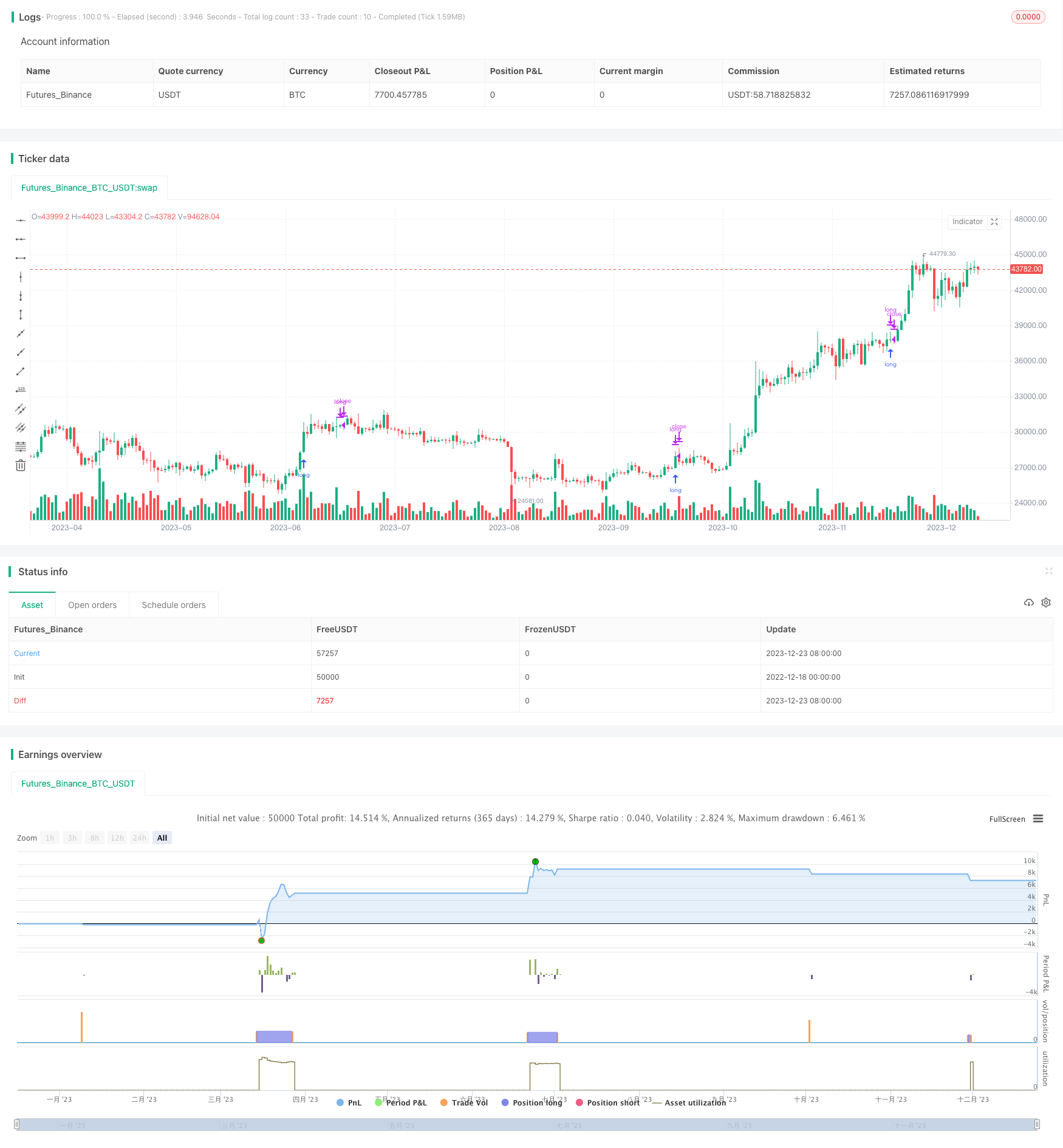
Overview
This is a long-only quantitative trading strategy that combines the advantages of the pivot point reversal and least square moving average strategies. It follows the major trend during a bull market and determines reversal signals after observing the pivot point upper rail to go long. At the same time, it requires the closing price to be above the Least Squares Moving Average before opening long positions to make the strategy more stable.
Strategy Logic
The strategy integrates pivot point reversal and least square moving average strategies. The pivot point reversal strategy calculates the highest and lowest prices over a certain number of trading days to obtain the upper and lower rails. When prices break through the upper rail, it is judged as a reversal signal. The Least Squares Moving Average is a trend-judging indicator that can better approximate prices. This strategy goes long when the pivot point upper rail is formed and the closing price is higher than the least square line.
Specifically, the strategy first calculates the highest price of the last 3 bars and the lowest price of the last 16 bars to obtain the upper and lower pivot point rails. It goes long when the upper rail is formed. When the next lower rail is formed, it closes positions. At the same time, it requires the closing price to be higher than the 20-day Least Squares Moving Average before opening long positions.
Advantages
Combines the strengths of two strategies for more stable and reliable trading decisions
Pivot point strategy judges reversal points, while LSMA filters false breakouts, reducing trading risks
Only goes long, in line with most people’s psychological expectations
Simple and clear strategy logic, easy to understand and optimize
Moderate trading frequency, suitable for medium-to-long-term operations
Risk Analysis
Unable to capture opportunities in rapid decline
Certain lag exists, may miss some upward opportunities
Larger losses when the market trend reverses
Solutions:
Appropriately shorten the calculation cycle to reduce lag
Adjust MA parameters to optimize participation
Add stop loss to reduce single loss
Optimization Directions
Add multiple trend indicators to improve accuracy
Incorporate machine learning prediction to guide decisions
Combine volatility indicators to control position sizing
Optimize parameters to improve win rate
Test longer time frame data to verify stability
Summary
This strategy integrates the strengths of pivot point reversal and LSMA strategies to control risks while judging trend reversals. With simple structure for easy understanding and testing, it is perfect for beginner quants to learn and practice. But its long side only approach prevents profiting from market declines, a major limitation. Further improvements in stability and tracking ability could be achieved by introducing more indicators and machine learning optimization for better performance.
/*backtest
start: 2022-12-18 00:00:00
end: 2023-12-24 00:00:00
period: 1d
basePeriod: 1h
exchanges: [{"eid":"Futures_Binance","currency":"BTC_USDT"}]
*/
//@version=4
//@author exlux99
strategy(title = "Pivot Reversal Upgraded long only", overlay = true, pyramiding=1,initial_capital = 100, default_qty_type= strategy.percent_of_equity, default_qty_value = 100, calc_on_order_fills=false, slippage=0,commission_type=strategy.commission.percent,commission_value=0.1)
/////////////
//time
fromDay = input(defval = 1, title = "From Day", minval = 1, maxval = 31)
fromMonth = input(defval = 1, title = "From Month", minval = 1, maxval = 12)
fromYear = input(defval = 2010, title = "From Year", minval = 1970)
//monday and session
// To Date Inputs
toDay = input(defval = 31, title = "To Day", minval = 1, maxval = 31)
toMonth = input(defval = 12, title = "To Month", minval = 1, maxval = 12)
toYear = input(defval = 2031, title = "To Year", minval = 1970)
startDate = timestamp(fromYear, fromMonth, fromDay, 00, 00)
finishDate = timestamp(toYear, toMonth, toDay, 00, 00)
time_cond = true
//
length = input(title="Length MA", type=input.integer, defval=20)
offset = 0//input(title="Offset", type=input.integer, defval=0)
src = input(close, title="Source")
lsma = linreg(src, length, offset)
//LSMA
leftBars = input(3)
rightBars = input(16)
swh = pivothigh(leftBars, rightBars)
swl = pivotlow(leftBars, rightBars)
swh_cond = not na(swh)
hprice = 0.0
hprice := swh_cond ? swh : hprice[1]
le = false
le := swh_cond and time_cond? true : (le[1] and high > hprice ? false : le[1])
//leverage
multiplier=input(1.0, step=0.5)
g(v, p) => round(v * (pow(10, p))) / pow(10, p)
risk = input(100)
leverage = input(1.0, step = 0.5)
c = g((strategy.equity * leverage / open) * (risk / 100), 4)
//entry
strategy.entry("long", strategy.long,c, when=le and close > lsma, comment="long", stop=(hprice + syminfo.mintick) * multiplier)
swl_cond = not na(swl)
lprice = 0.0
lprice := swl_cond ? swl : lprice[1]
se = false
se := swl_cond ? true : (se[1] and low < lprice ? false : se[1])
strategy.close("long", when=se)